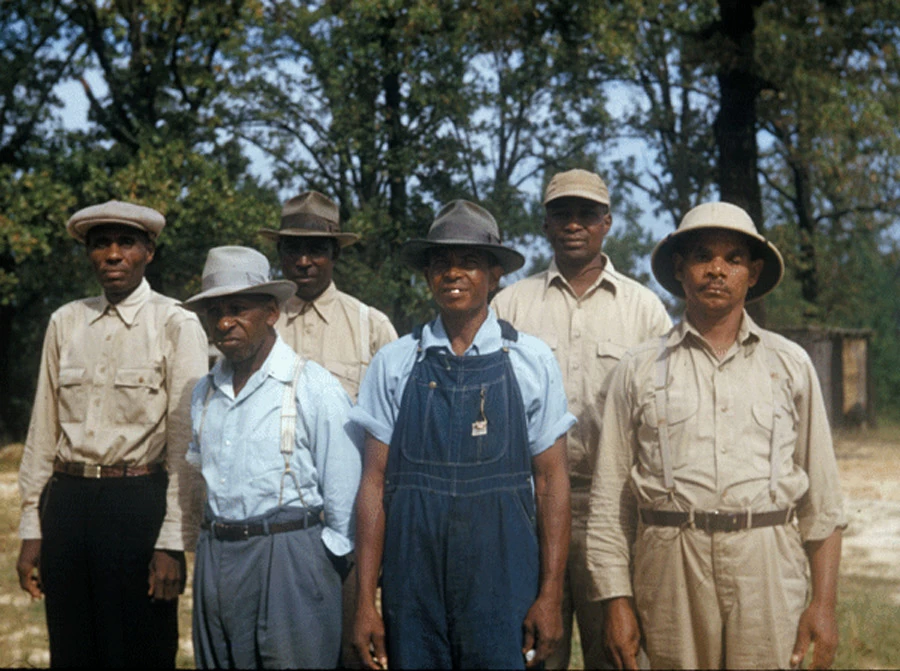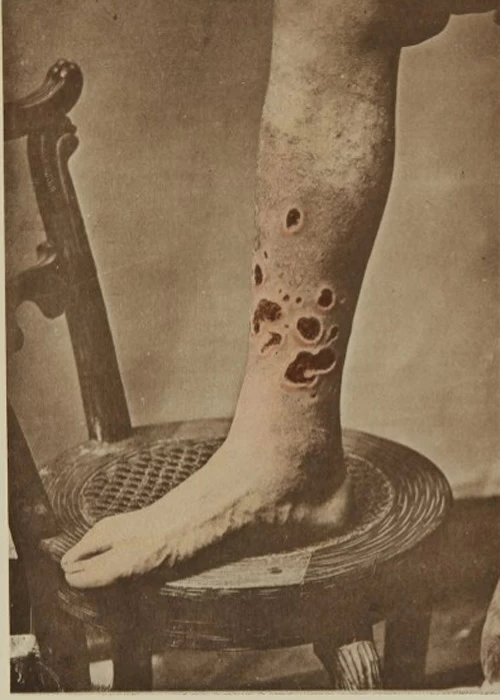The Tuskegee experiment was one of the most ethically abusive studies in United States history. The full title of the study conducted by the United States Public Health Service (USPHS) was the “Tuskegee Study of Untreated Syphilis in the Negro Male” and it was conducted on a group of about 600 African Americans suffering from syphilis.
It included x-rays, blood tests, autopsies, and spinal taps of the subjects, as the researchers sought to understand the disease further. However, what it did not include was treatment for the syphilis, which was allowed to progress untreated in the subjects.
The Tuskegee Syphilis Study
When the study was started in 1932, there was no cure available for people suffering from syphilis. The highly contagious disease started with minor symptoms, such as swelling near the groin. From there, the disease would commonly progress at a rapid pace, leading to chronic fatigue, weight loss, and hair loss, and eventually even death.
In order to understand the disease better, the Tuskegee Institute and the USPHS decided to conduct a study in Macon County, Georgia. To attract applicants, they promised to deliver free medical care to participants.
Among the 600 African American men recruited, 399 men suffered from the disease, while the remaining 201 men acted as the control group of the study. The main purpose of the study was to understand the history of sufferers, and to observe the effects when the disease was left untreated.

The study intended to document the complete progression of the disease in the body of individuals and its effects. However, the subjects of the study were unaware of the fact, and the promise of treatment was a lie.
The participants were never told that the study was actually an experiment to gain insights into venereal disease. Instead, they were told that they would be provided treatment for getting rid of bad blood and given free medical care. The subjects were informed the treatment would go on for a period of six months, and believed that it would help cure them.
- Bedlam: The Evil Secret In The Heart Of London
- Medical Malpractice and the Mysterious Death of George Washington
This deception was maintained throughout the initial phase of the study, and in 1933 the researchers of the Tuskegee experiment decided to even expand the experiment for a longer-term. In order to continue the pretense of treatment, they had been giving the patients a number of ineffective medicines, including capsules and ointments.
Research At What Cost?
Patients started to become suspicious of the treatments they were being offered, and many stopped attending the appointments. To incentivize the patients and convince them to continue being a part of the study, they were offered hot meals and certain services and medicines. At the height of the Great Depression many found these offers too attractive to resist.
Eunice Rivers, a nurse, was also hired by the USPHS to manage the patients’ palliative care. The organizers of the study also started covering the funeral expenses of the patients, as this allowed them to conduct the autopsies of the test subjects as part of the research.
On a number of occasions, the researchers denied treatment for the disease without the patient’s knowledge or consent. A list was even provided to doctors in Macon County in 1934 of patients who might seek their help, and the doctors were instructed to refuse to treat them, all in the service of the study.
This went on for years. In the year 1940, the Alabama Health Department was also provided with a patient list and asked not to treat them. In 1941 the entrance medical exam uncovered syphilis in a number of applicants who were believed healthy. The men were refused both admission to the experiment and treatment by the team.
Slowly the real motives of the Tuskegee experiment started to be revealed. Instead of observing and documenting the effectiveness of treatment, the researchers lied to the participants and observed the unchecked progress of the disease in the body of individuals.
The Discovery of Penicillin
By 1947, penicillin became a standard treatment for the disease syphilis. This prompted USHPS to open a number of Rapid Treatment Centers in order to treat people with syphilis using penicillin.

However, the Tuskegee continued, and the 399 participants who could have been easily treated with penicillin were denied the appropriate treatment. Many of the patients experienced worsening of the symptoms, and believing themselves to be safely in treatment, started passing the disease to their partners and children.
Thankfully by now, progress had started to overtake the study, with 30 percent of the subjects having received penicillin by 1952. The USPHS still continued to argue that the subjects of the study should not take penicillin and adhere to the treatment offered to them.
- Poveglia Island and Its Haunting History
- Martin Couney: The Fake Doctor Who Saved Thousands of Premature Babies
The explanation offered by the researchers did however start to change. In 1965, more than 30 years after the start of the study, they started telling the patients that it was too late for them to take penicillin.
The reason that they gave for this was that the disease had progressed a lot, and the drug would not be of any help. Through their non-treatment of the disease, both before and after a treatment was readily available, left these men facing an agonizing death.
The Truth Will Out
The Nuremberg code of 1947 and the Declaration of Helsinki of 1964 were both landmark pieces of legislation designed to prevent inhuman experimentation such as this. However, the study continued till late 1969.
Only in 1972, the truth behind the Tuskegee study was finally revealed when Peter Buxtun leaked information relating to the study to the New York Times. On the 16th of November, the newspaper got it published on the front page.
This finally ended the Tuskegee study. However, by the time the truth was revealed, only 74 participants of the study were alive. 128 patients had died due to the worsening of the symptoms of syphilis or the complications of the disease.
The revelation of the heinous nature of the experiment led to mass public outrage, and a lawsuit was filed against USPHS. Compensation was offered to the families of the subjects.
The Tuskegee study was indeed one of the most unethical studies conducted in history. Black men were targeted, bribed and then left to die while believing they were being treated. Treatment advances such as penicillin were ignored in favor of continuing the study. Families infected needlessly.
The blood of the dead over 40 years of medical abuse is on the hands of those who organized the Tuskegee experiment.
Top Image: Participants were promised treatment but were left to die. Source: Taco325i / Public Domain.
By Bipin Dimri